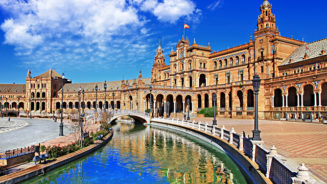EMEA rises to ‘most expensive region in world to live’ as Julius Baer publishes Global Wealth and Lifestyle Report 2024
Price rises for all goods and services in the Julius Baer Lifestyle Index slowed to 4% in US dollar over the past 12 months meaning that for the first time, EMEA becomes the most expensive region to live well. The Lifestyle Survey results show that when it comes to travel and hospitality, we live in the Roaring 2020s.
The Julius Baer Global Wealth and Lifestyle Report 2024 is being published against a complex global background. As this year’s results show, the impact of the global pandemic has settled into a ‘new normal’. However, inflation, rising living costs, and increased geopolitical tensions continue to impact prices and priorities globally.
In 2024, price rises have slowed to 4% on average in US Dollar terms, compared to 6% in 2023. Prices this year grew faster for goods than services, with goods up 5% on average and services up 4%, both in US Dollar terms. Although cities continue to become more expensive, we have seen a normalisation of inflation rates over the past 12 months.
The city ranking is based on the Julius Baer Lifestyle Index, which analyses the cost of a basket of goods and services representative of ‘living well’ in 25 cities around the world.
Regional findings
While Singapore (1st, unchanged) and Hong Kong (2nd, up from 3rd) still dominate the podium, the Asia Pacific (APAC) region drops down the regional ranking to 2nd place for the first time, due to lower rankings for cities like Tokyo, and a very strong return to prominence for Europe, Middle East and Africa (EMEA). Last year, EMEA was the cheapest region to live well. This year, driven by London taking the 3rd spot (up from 4th) and every single European city moving up the ranking, as well as strong exchange rates vs. the US dollar (Euro +4%, Swiss franc +8%), EMEA is the most expensive region to live well. Although the Americas fall to last place, both New York and São Paulo remain in the top ten.
Significant price increases over the past 12 months have helped to position EMEA as this year’s most expensive region. In this year’s index, Zurich climbed eight places, while Milan and Paris rose by six and five places respectively. London has overtaken Shanghai to take 3rd place.
APAC
Asia Pacific (APAC) is home to the two most expensive cities in our index – Singapore and Hong Kong. However, falling prices in some cities – Tokyo in particular (23rd, down from 15th) – mean the region is no longer the most expensive. Bangkok and Jakarta, which have been rising in the ranking over recent years, have now tumbled down from 11th to 17th and 12th to 14th respectively. Shanghai has fallen to 4th place after holding the top spot in 2022 and 2021. Sydney (11th) has jumped six places globally following inflationary surges and is, together with Hong Kong, the only riser in our ranking in APAC this year.
The Americas have fallen back to the bottom of the ranking, following a brief sojourn in second place last year. New York (7th, down from 5th) and São Paulo (9th, unchanged) remain in the top 10, but Miami has dropped to 15th place (down from 10th). On the other hand, Mexico City (16th, up from 21st place), has leapfrogged five places due to the strength of the local currency.
Currency fluctuations have overall played a significant role with regards to the biggest risers and fallers in our index this year. While costs have often barely changed in local currency, the conversion to US dollar (USD) made the difference. Index prices are converted to USD to allow for global comparison, and the strength of currencies such as the Swiss franc and, conversely, the poor performance of currencies such as the Japanese yen are clearly seen in the performance of these cities in USD terms.
Christian Gattiker, Head of Research, Julius Baer, commented: “This year’s report shows that currencies matter a lot. Take Tokyo as an example. This used to be the posterchild of an ultra-expensive city in the 1990s. However, the steady decline of the yen has shown how this can change. As trivial as it seems, we tend to forget that the costs of living look completely different in the eyes of a stranger – especially if that person thinks in US dollars or Swiss francs instead of the local currency. Currency and context matter.”
Leading London
Having dropped off the podium in the 2023 Lifestyle Index, London now returns to being one of the priciest global cities for living well, leading this year’s trend for European cities climbing the ranking.
Commenting on the result, Jamie Banks, Head of Wealth Planning UK, said: “Over the past year, the inflationary environment in the UK has meant sustained higher living costs for all levels of consumer, as prices for everything from staples to luxuries have remained elevated. This year’s results show the premium paid for education, hospitality, and legal services, as well as luxury fashion items, in London, that can be attributed to increasing labour, goods, and real estate costs.”
Despite these higher costs, the 2024 Lifestyle Survey shows a thirst for travel, hospitality and luxury retail that is likely to continue growing in the coming year, with the trend for personal enjoyment particularly strong in Europe. However, economic, geopolitical, and social wariness mean the wealthy are also keeping one eye on their finances.
Lifestyle
“While the lifestyle budgets of the wealthy are significant, and there is strong desire to travel, socialise, and shop, the increased cost of living well has meant reinforcing financial structures to guarantee levels of income while indulging in discretionary spending”, continues Jamie Banks.
“As a city, London retains its attractiveness for quality of life, economic opportunity, and relative stability, compared to European and international rivals. However, recent legislative changes, a prospective change of government, and the significant cost for items such as premium property, medical services and education, risk dampening its draw for wealthy individuals and families.”
Price developments
Turning to single index items, EMEA is the most expensive region to own a home, with residential property prices 17% above the global average. Fine dining is 13% more expensive than elsewhere and MBAs are significantly more expensive (24%), driven by the high prices charged by all European cities. In the luxury fashion sector, men’s suits, ladies’ shoes, and ladies’ handbags in EMEA are now 15%, 14%, and 11% more expensive respectively in USD terms than a year ago. Overall, prices were up 7% on average in EMEA.
While on average across Lifestyle Index items London has only seen a 4% year on year price increase in GBP, this overlooks the fact that many items’ prices are among the highest of all cities, so even small increases can significantly affect affordability. Hotel suites in the British capital have seen the biggest price increase YoY in GBP (+31%), which, coupled with the slew of super-premium properties that have recently opened in the city, suggests that London retains its draw for tourists. Conversely, for London residents wishing to escape abroad, the price of business class flights (-17%) has fallen YoY, although this could be attributed to rebalancing following the disruption to travel during the pandemic years.
Style
Stylish individuals will not be pleased that fashion and luxury goods such as shoes (+15%), handbags (+11%) and jewellery (+11%) have all seen double digit price increases in the last year, greater than in rival European fashion capitals such as Milan and Paris.
For those in London who prefer a fine Whisky or Champagne, there is some good news as the price of Whisky (-19%) has significantly decreased YoY, while for Champagne the city is among the most relatively affordable places in the world to pop a cork.
There have been some significant price falls in APAC over the past 12 months. The most extreme example of this is the 14% fall in the cost of business class flights, the biggest regional decrease for an item this year compared to last year. However, this appears to be a correction to the sky-high fares in 2022 and early 2023. On the other hand, APAC residents pay more for jewellery and private school compared to last year (both up 10%), although it costs less to buy a bicycle (-13%) or rent a hotel suite (-11%). On average, prices in APAC increased 1%.
The Americas are the most expensive region for healthcare-related costs, at 86% more than the global average. It is also significantly more expensive than the global average for champagne (27%), whisky (22%), and bicycles (9%). The Americas also lay claim to the most extreme regional increase for any item year-on-year: hotel suites were up almost 34% compared to 12 months ago in US dollar terms. Average prices in this region rose by 6%.
Lifestyle survey findings
The Lifestyle Survey delves into the lives and consumption trends of HNWIs (high-net-worth-individuals) in 15 countries in Europe, APAC, the Middle East, Latin America, and North America. The survey also examines shifts in consumption patterns and interrogates the reasons behind these changes. In doing so, it paints a broader picture and provides insights and data which substantially augment the Lifestyle Index.
Across all regions surveyed, HNWIs’ demand for leisure travel, fine dining and luxury hotels surged and is projected to increase further. HNWIs want to indulge themselves in a way that recalls the post-war rebounds of the 20th century. HNWIs in APAC and the Middle East led the growth and will continue to do so in the future. Among HNWIs in the Middle East in particular, we will see a concentration on luxury goods such as clothing, watches, and residential property.
As we noted in last year’s Global Wealth and Lifestyle Report, the trend for health as the new wealth is continuing to gain momentum. Health spending featured in the top five for all regions when it came to spending intentions for the next 12 months and it remains a key focus globally. HNWIs, particularly in APAC, will focus their investments on healthcare.
As in previous years, and not surprisingly, the primary financial goal among our respondents is wealth creation and increasing assets. In all regions, HNWIs invested more in the past 12 months than in the year before, with the Middle East and APAC leading the charge.
At least 70 per cent of HNWIs surveyed globally experienced an increase in the total value of their assets in the past 12 months, especially in North America, the Middle East, and Latin America.
HNWIs
Supported by their own financial expertise and increased asset values, HNWIs from APAC, the Middle East and Latin America have increased the risk level of their investments, while conservatism and fragility prevails in Europe and North America.
While personal enjoyment remains a key pursuit, sustainability plays a greater role in investment strategies in 2024 for almost all HNWIs in APAC, the Middle East, and Latin America. More responsible investments have been made in these three regions, with the majority of HNWIs having reviewed their portfolio to understand the ESG impact of their investments, with a significant higher ESG orientation than in Europe and North America. However, what is true for investments is not true for goods, as sustainability still plays a minor role in actual purchasing habits.
While HNWIs still want to indulge themselves, they are also seeking to empower themselves by prioritising health, aesthetics, and the acquisition of cutting-edge technology. They want to take long-term bets by acquiring property, particularly HNWIs in the Middle East. With demand still outpacing ethics, the challenge will be to encourage HNWIs to fully integrate sustainability into their life and investment decisions, in all markets.
To download the Julius Baer Global Wealth and Lifestyle Report 2024, please click here.





